AES-NI Ransomware
Get Rid Of AES-NI Ransomware Successfully
Various AES-NI Ransomware related infections| Spyware | DiscErrorFree, LinkReplacer, Adware Spyware Be Gone, FKRMoniter fklogger, Infostealer.Ebod, Blubster Toolbar, Spyware.Acext, Softhomesite.com, Worm.Zlybot, Files Secure, Win32.Enistery, Worm.Randex, TAFbar, AdwareFinder |
| Browser Hijacker | Search-fever.com, Searchiu.com, ManageDNS404.com, Search.certified-toolbar.com, HappinessInfusion Toolbar, Softbard.com, Int.search-results.com, Myantispywarecheck07.com |
| Adware | TopText, Sqwire.a, Weblookup, WebBar, FPHU, Help Me Find Your Info Hijacker, Virtumonde.quh, SpecialOffers, AdTools, SpyQuake, MyLinker |
| Ransomware | Doctor@freelinuxmail.org Ransomware, PornoPlayer Ransomware, Xampp Locker Ransomware, Council of Europe Ransomware, AiraCrop Ransomware, .uk-dealer@sigaint.org File Extension Ransomware, ZekwaCrypt Ransomware, Levis Locker Ransomware, WickedLocker Ransomware, Crypt38 Ransomware, Runsomewere Ransomware, Philadelphia Ransomware, Cyber Splitter Vbs Ransomware, Black Virus Lockscreen, ShinoLocker Ransomware, Alfa Ransomware, Atom Ransomware, ReCoVeRy+[RANDOM LETTERS] File Extension Ransomware |
| Trojan | Trojan-Downloader.Win32.FraudLoad.abk, Win32/Banload.AYF, TROJ_WALEDAC.AIR, Trojan.IconDrop, Worm.Nuqel.AC, TrojanDownloader:JS/Renos, Percent Trojan, Duload, Spyeye.gen!A |
Delete AES-NI Ransomware From Operating System Easily
AES-NI Ransomware is yet another harmful computer threats that already infected large number of Operating System across globe. With the only bad intention to make illegal profit and steal victims personnel data cyber criminals created this nasty threats as well as spread extensively over Internet. Basically it intrudes inside your Operating System through bundled with freeware or shareware program. Additionally clicks to suspicious ads, infected websites visits and nevertheless opening spam email attachments result in its invasion.
AES-NI Ransomware does all best to lean down your computer performance, creates large number of junk files that consumes maximum resources as resultant CPU hangs a lot. Moreover, alter browser default settings according to its needs after which continuous redirection, regular coming ads with much slow Internet speed frustrate you. The worst part, security analyst found it monitors all activity you do online, thus private information are under threats. Therefore you are strongly suggested to Delete AES-NI Ransomware from Operating System as soon as possible.
Part 1:- Start Operating System In Safe Mode With Networking
Windows 8/10
- Click on Start menu >> Press Shift key.
- Click on Restart button.

- Select Troubleshoot option from screen.

- Click on Advanced Options >> Choose Startup Settings option.

- Select Enable Safe Mode option >> Click Restart button.

- Press F5 button to Enable Safe Mode With Networking option.

Windows XP/Vista/7
- Click on Start menu >> Select Restart button.

- While Operating System start booting, Press F8 button continuously.
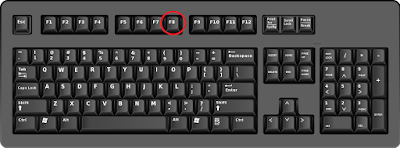
- After that Advance boot menu appear on Operating System screen.

- Select Safe Mode With Networking Option.

- Finally press Enter button.
Part 2:- Delete AES-NI Ransomware From Control Panel
Windows XP
- Go the Start menu >> Select Control Panel.
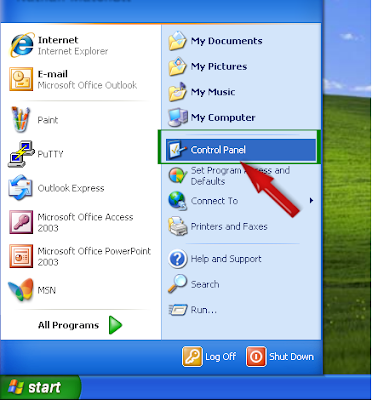
- Click on Add or Delete programs option.
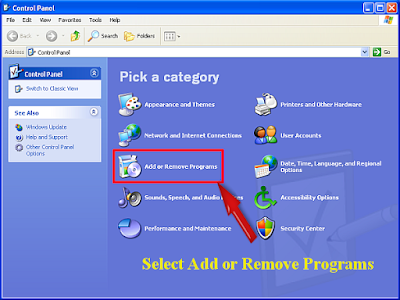
- Search and Delete unwanted program from Operating System.
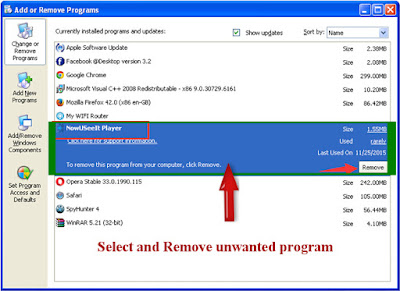
Windows 7
- Click the Windows key.
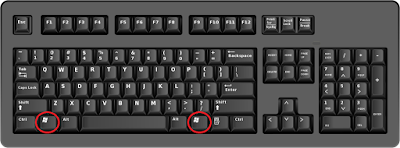
- Select Control Panel Option.

- Select Delete A Programs option.
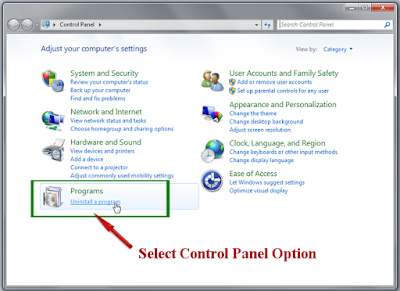
- Select and Delete unwanted program from system.
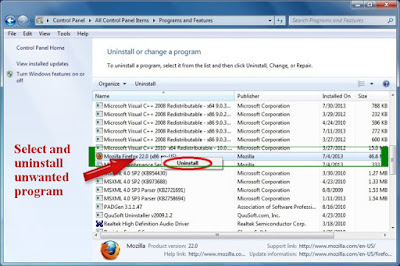
Windows 8
- Press Win+R button to open Run Box.

- Type control panel in Run window.
- Press Enter button to open the Control Panel.

- Select Delete a program.

- Do Right-click AES-NI Ransomware related programs.
- Click Delete option to Delete it completely.

Windows 10
- Press the start button.
- Select Settings option.

- Choose system option there.

- Click on Apps and Features option.

- Select and Delete unwanted program.

Part 3:- Delete AES-NI Ransomware Related Process From Task Manager
- Press ALT+Ctrl+Del buttons altogether.
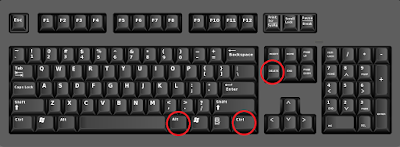
- Choose Windows Task manager option from Operating System screen.
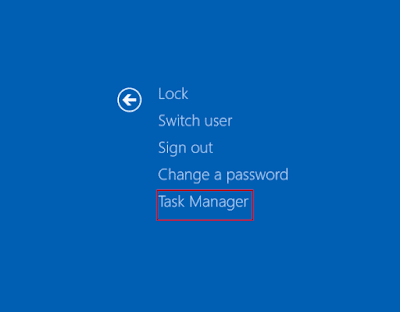
- Select the malicious process.
- Click on End Task button.

Part 4:- Solution to Delete AES-NI Ransomware From Firefox
From Mozilla Firefox
- Open Mozilla Firefox browser.
- Click on gear icon to open menu.
- Select Add-ons >> Add-ons Manager tab will open.
- Choose Extensions or Appearance panel.
- Choose AES-NI Ransomware add-on you want to Delete.
- Click the Delete button.

From Google Chrome
- Click on great icon to open Chrome menu.
- Now click on the Tools option.
- Go to Extension >> Select unwanted extension.
- Finally click on trash bin icon.

From Internet Explorer
- Open Internet Explorer browser.
- Click on Gear Icon to open Tools.
- Click on Manage Add-ons option.
- Select Toolbars and Extensions tab.
- Find AES-NI Ransomware related add-ons >> Click Disable.
- Click More information button.
- Finally, click on Delete button.

From Microsoft Edge
Microsoft Edge doesn't support extension so you need to reset your
browser homepage.
- Open Microsoft Edge browser.
- Click on More (...) icon >> Go to Settings.
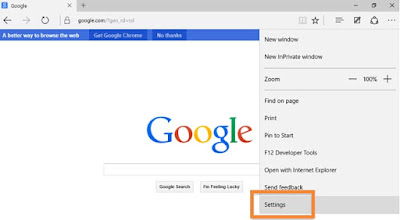
- Select a specific page or pages under Open option.
- Select Custom option.
- Enter URL that you want to set as your browser homepage.

Part 5:- Delete AES-NI Ransomware From Registry Editor
- Pressing Win + R keys together.
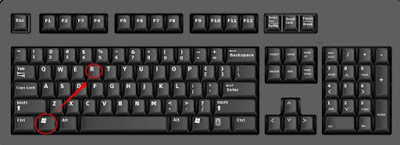
- Type regedit >> Click OK.

- Find and Delete AES-NI Ransomware related registry files.
HKEY_LOCAL_MACHINESYSTEMCurrentControlSetServicesWpm
HKCU\Software\Microsoft\Windows\CurrentVersion\Internet Settings\random
HKEY_LOCAL_Machine\Software\Classes\[adware name]
HKEY_CURRENT_USER\Software\Microsoft\Windows\CurrentVersion\Run “.exe”
HKEY_CURRENT_USER\Software\Microsoft\Windows\CurrentVersion\Internet Settings “CertificateRevocation” = ’0
HKEY_LOCAL_MACHINE\SOFTWARE\Microsoft\Windows\CurrentVersion\run\random
HKEY_CURRENT_USERSoftwareMicrosoftInternet ExplorerMain “Default_Page_URL”


No comments:
Post a Comment